Experts in conversation at FESPA Printeriors 2021
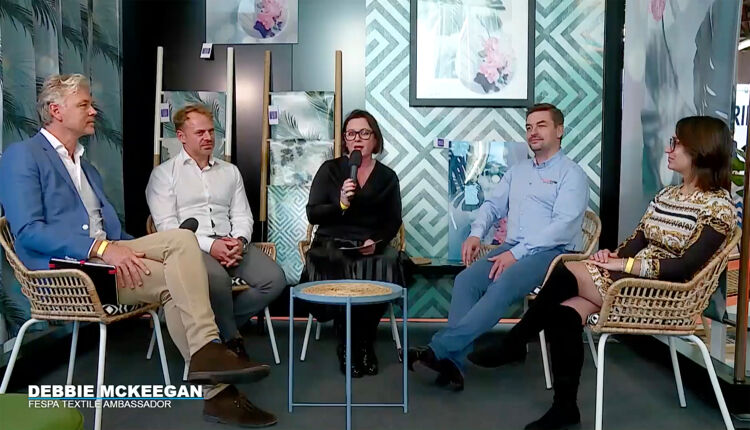
Debbie McKeegan shares some findings from a recent podcast where she interviewed industry experts from Mimaki, EFI Reggiani, Veika and Chromaluxe at FESPA Printeriors 2021.
FESPA Printeriors is a showcase of Design and Digital technologies. A unique feature delivered in collaboration with the print community to demonstrate the application of print technologies across all surfaces in the Interior Décor space. After a pause of almost 18 months, this year’s Printeriors event offered a physical display of the evolution of digital technologies in the last 2 years to present new applications alongside new materials and a heighten interest in sustainable best practice.
In this article we bring you excepts from our recent podcast featuring an interview recorded live in Amsterdam at the FESPA Global Expo in October 2021 at the Printeriors stand. This roundtable conversation with industry experts includes Mark Sollman from Mimaki, Micol Gamba of EFI-Reggiani, Aleksey Etin of Veika and Peter Boodts of Chromaluxe.
.jpg?lang=en-GB)
The panels discussion focusses on market trends and opportunities in the Textile and Interior Décor sector. Listen to the full podcast here or watch the video now.
Moderated by Fespa Textile ambassador, Debbie McKeegan the conversation opened with the question: What excites you most about the Interior Décor Industry?
.jpg?lang=en-GB)
Micol Gamba of EFI -Reggiani commented “I think that in the interior decoration marketplace, sales were boosted last year by the pandemic, unlike other applications, unfortunately. But it was a unique time - since people were forced to stay at home, and this really focused their vision on their interior space, their willingness to personalize their environment and feel comfortable. What excites me most about this application of digital technology is that the Interior market is growing, alongside the demand for personalization. This is something truly exciting. And we are really riding this wave with some green short processes that really enable personalization, and faster turnaround time, like our pigment technology, also dye sublimation, direct to textile and also transfer printing.”
.jpg?lang=en-GB)
Peter Boodts of Chromaluxe added “The pandemic brought us into a situation where people were looking at home improvement, spending money where they normally would spend it outdoors, traveling, going to restaurants, looking at their own living spaces and seeing how they can improve the environment because they were spending a lot of time there. Now that we are all (or most of us) returning to the office, we also see that expansion in the commercial interior world. As employers are now thinking on how we return to the office or return into a hybrid working situation - they are now focusing on decorating the work environment. Interior design, and interior decoration in the workspace post pandemic is an interesting trend to watch. And we are super excited to be part of that of that trend”.
Aleksey Enit of Veika also commented “The most important thing, people stayed at home, they spent money and invested in interior decoration. But I think one additional fact has emerged - the consumer has become focused on ecology. We want our home to look more beautiful. But - we also want our environment to be healthy. Eco-friendliness became increasingly important during Corona period, because of two things. One is we spend a lot of time indoors - we need to take care that everything inside our home is safe. So that decreases the use of solvents in printed products. Secondly - the consumer increasingly wants natural materials; they want certified products and processes. But also - I think people noticed our impact on the planet Earth. So, as we all of us saw during pandemic, how the ecology and ecosystem started to grow back - because we are not polluting it that much. That's what I would add to my colleagues’ comments – The Eco-friendliness and environmental perspective has become increasingly important for interiors”.
Last but not least - Mark Sollman of Mimaki also added “I agree with all my colleagues - we have witnesses the same story. We also see an acceleration towards personalisation. That for us is a strong trend - people are willing to invest 70% more value in printed products, if the product is personalized for their home or commercial interior. And we also see a trend in printing on a wide variety of materials. Dye sublimation is a growing sector of our industry, as is the demand for high resolution printing on a wide variety and a range of materials.”
.jpg?lang=en-GB)
The conversation continues to discuss the importance of workflow automation for customization and industrial mass production and the continued importance of sustainable production. This was a unique opportunity to bring together a panel of experts - all of whom hold many years of experience in the printing industry. Their insights signpost new customer behaviours and a new heightened focus throughout the Interior Industry and the wider textile/print industry on environmental, efficient and responsible production -manufacturing technologies and materials.
Special thanks to all our expert panelists for their time, expertise and informative insights and for your collaboration in the production of the Printeriors Showcase. We look forward to working together again in Berlin.
Listen to the full podcast here.
FESPA Printeriors will return in 2022 at FESPA Global Print Expo 2022 which will take place from 31st May – 3rd June 2022 at the Messe Berlin. For more information on FESPA Global Print Expo 2022 please visit here.
Topics
Interested in joining our community?
Enquire today about joining your local FESPA Association or FESPA Direct
Recent news
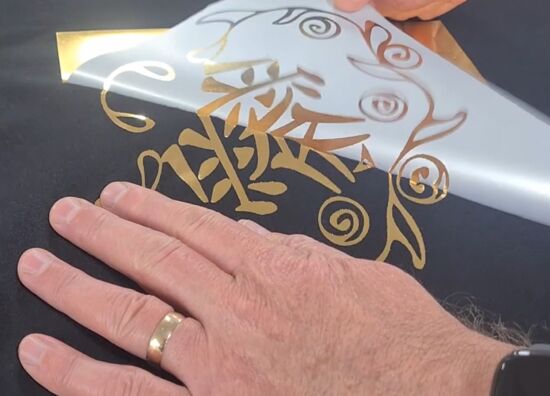
Special Effects in DTF Will Make Your “Prints” More Memorable
The DTF market is expanding with new vendors and innovations like multi-head printers enabling diverse ink options (spot, neon). Decorative films offer streamlined special effects. Keypoint Intelligence tested metallic and glitter films, noting varied ease of use and wash durability. New technology using adhesive and foil directly promises further creative advancements in DTF.
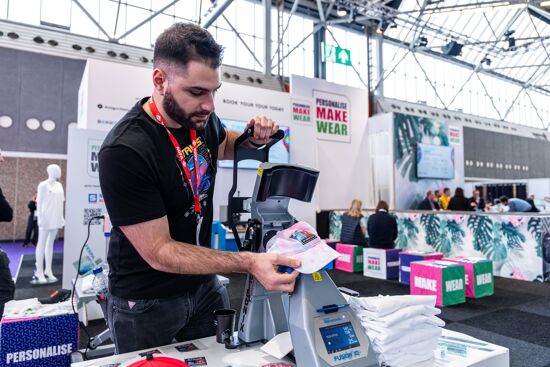
SmartHub – Expectations, opportunities and why you should attend!
The SmartHub at Personalisation Experience 2025 in Berlin will showcase personalisation and smart production opportunities across industries like textiles. Featuring a Smart Factory Trail with brands like Inkcups and Trotec, and a conference with experts discussing AI, mass customisation, and profit strategies, it offers insights into reducing waste and boosting efficiency through digital methods. Panel sessions will explore growth, automation in textiles, and smart manufacturing.
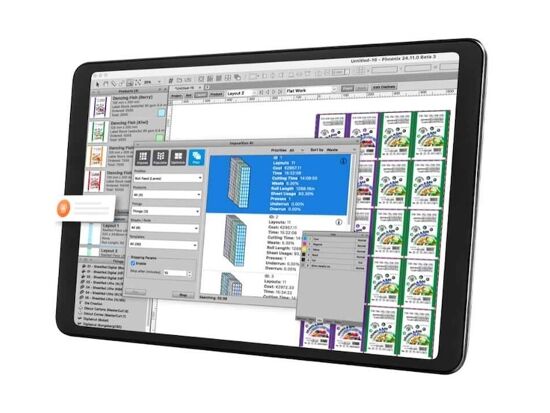
How is AI revolutionising Large Format Print?
Nessan Clearly discusses how AI in print relies on data pattern matching, already enhancing software for large format providers. He predicts that this will result in increased AI integration in workflow planning, job queue management, colour correction, image upscaling, and predictive maintenance via sensors and vision systems, ultimately streamlining operations and offering greater flexibility.
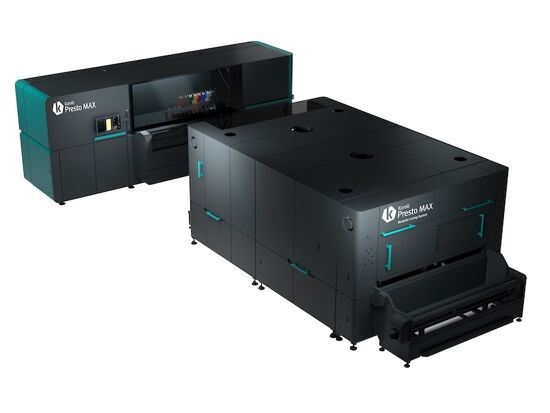
One Ink for All? Exploring Pigment in Textile Printing
Digital textile printing faces complexity due to diverse substrates requiring specific inks. The industry seeks a universal ink, with pigment ink showing potential. While traditionally for natural fibres, advancements aim to broaden its application, simplify processes by reducing pre/post-treatment, and improve sustainability, though challenges like hand feel on garments remain.